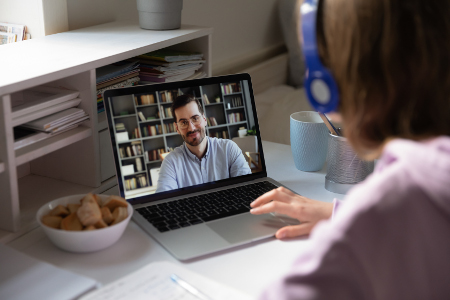Future workplace, now


Knowing that the needs and expectations of our clients are changing, requiring all of us to renew our skills, what will work require of us in five or even 10 years’ time? With changing demographics and growth in non-traditional working arrangements, what does a workforce need? With unparalleled growth in technology, data and AI, what does a workplace look like? All these coming together mean the workplace will look radically different to how it does today.
The current pandemic and the changes it’s brought has resulted in all of us having to explore these questions sooner than we might have done and at a greater pace.
If we respond inclusively, I see this as a positive opportunity for our clients, colleagues and wider society.
The ‘workplace’ as a concept is being challenged. People want very different choices in the way they work and when, and businesses are having to consider how much things like commuting, important family time, work/life balance and working hours affect people’s productivity and wellbeing.
Flexibility is at the heart of much of this.
People want different choices in the way they work and when
Colleagues’ experiences are all different and the challenges faced during lockdown certainly don’t reflect an ideal flexible working situation. However, we’re hearing from our colleagues, through our recent annual employee survey, that work-life balance has improved (up 2ppt on a year ago) and that people feel their wellbeing is better supported (up 5ppt). People are also telling us that their departmental processes are becoming more efficient (up 4ppt) and that access to the tools they need to do their job has improved (up 4ppt). The unplanned global experiment in home working has been successful, and it’s making us consider longer-term working arrangements. While many of our people never worked from home previously, over two thirds are now telling us they would like to work flexibly for at least 50 per cent of their work week.
We can’t afford to leave any colleagues behind as we adapt. We know, from our own research and others, that we perform better when we leverage our unique diversity – when we create an inclusive culture to leverage our diverse talent. We need inclusive practices that go well beyond traditional unconscious bias training – practices that help build resilience, support wellbeing and ultimately enable productivity through peak performance.
So, we need strong enablers. We’re thinking differently about how we use our office space and ensuring we have the right technology and collaboration tools to enhance teamwork and innovation. Technology that can make people’s experience of work more, not less, human. People will always want space to come together, but given 78 per cent of our people tell us they can work productively from home, the purpose of the office has changed. The activities our people need the office of the future to support include inducting new colleagues, collaborating on creative work, informal social interaction, and learning from and connecting with others, all of which help meet broader wellbeing needs as humans.
We, along with all companies, need to look at these outcomes as opportunities, not hindrances.
In parallel, there is a need to up-skill and re-tool at all levels to manage the changing nature of business and what our clients need. Not only to be better at our jobs, but to ensure we develop and grow the jobs of the future.
The future of work is no longer a distant proposition we have time to prepare for. It is here, now!
The future worker will be at their best when working towards outcomes as opposed to presenteeism; collaborating virtually in service of our clients across our network; feeling free to explore their creativity; and supported to turn creative ideation rapidly into innovative solutions. Our people and their leaders need to be relentless in breaking down barriers, constantly improving how work gets done – not only will this help increase productivity, but it will best position workers to adapt to change.

Continuous learning is essential to remain relevant for the future. Our recent experience with COVID-19 has shown us that the demand for learning, development and growth is there – with 125 per cent more digital learning to date this year than in the whole of 2019. In just four months since launching our new online learning platform, we’ve had over 40,000 employees accessing digital learning and viewing over 1.4 million pieces of learning content.
But learning to what end? To help our people rise to the change, we have articulated the top 10 skills we believe are crucial for the evolving world of banking – a combination of technical skills like digital, data and client advisory but also human skills like managing ambiguity, building resilience, and leading inclusively.
There is much more to do and embedding a learning culture won’t happen overnight – but we are encouraged that the appetite is there, and by unleashing the full potential of our people we will best serve our clients as they too navigate these changes.
The future of work is no longer a distant proposition and one we have time to prepare for. It is here, now!
By embracing the opportunities, and adapting and responding quickly to the change, we have the potential to rewire how we think about work and workplace – ultimately making it more innovative, more inclusive and better performing. By offering choice, flexibility and supporting colleagues to learn, develop and grow, we see an immense opportunity to provide the optimal experience for the workforce of the future.